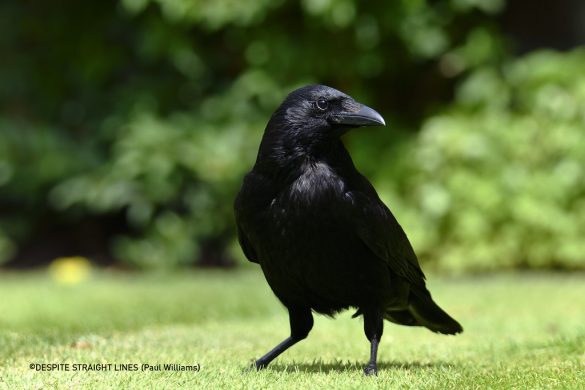As pet owners, we all want to provide the best possible care for our furry friends. One of the most important aspects of pet care is choosing the right diet. With so many options available, it can be overwhelming to decide what to feed your pet. From kibble to raw food diets, the choices are endless. But fear not, as we delve into the world of pet nutrition, we’ll explore the various options and help you choose the perfect diet for your pet’s digestive delicacies.
1. “From Kibble to Raw: Exploring the World of Pet Diets”
Pets are an integral part of our lives, and we want to ensure that they receive the best possible care. One of the most important aspects of pet care is their diet. With so many options available in the market, it can be overwhelming to choose the right one. In recent years, there has been a growing trend towards feeding pets a raw diet.
Raw diets consist of uncooked meat, bones, and organs. Advocates of this diet claim that it is more natural and healthier for pets. However, it is important to note that raw diets can also pose health risks to both pets and their owners. It is crucial to consult with a veterinarian before switching to a raw diet and to ensure that the diet is balanced and meets all of the pet’s nutritional needs. Additionally, it is important to handle raw meat safely to prevent the spread of bacteria.
On the other hand, kibble is the most common type of pet food. It is convenient, affordable, and easy to store. However, not all kibble is created equal. It is important to read the label and choose a high-quality brand that meets the pet’s nutritional needs. Some kibble brands may contain fillers, artificial preservatives, and other harmful ingredients. It is also important to monitor the pet’s weight and adjust the amount of food accordingly.
In conclusion, there are many different types of pet diets available, and it is important to choose the right one for your pet’s individual needs. Whether it is kibble or raw, it is important to consult with a veterinarian and ensure that the diet is balanced and meets all of the pet’s nutritional needs.
2. “The Importance of Tailoring Your Pet’s Diet to Their Unique Needs”
When it comes to feeding our pets, it’s important to remember that one size does not fit all. Just like humans, each animal has their own unique dietary needs that must be met in order for them to thrive. Tailoring your pet’s diet to their specific needs can have a huge impact on their overall health and well-being.
There are a variety of factors that can influence your pet’s dietary requirements, including their age, breed, weight, and activity level. For example, a young, active dog will have different nutritional needs than an older, less active dog. Similarly, a cat with a sensitive stomach may require a different type of food than a cat with no digestive issues. By taking the time to understand your pet’s individual needs, you can ensure that they are getting the right balance of nutrients to support their health and happiness.
- Consult with your veterinarian: Your veterinarian can provide valuable insight into your pet’s specific nutritional needs based on their age, breed, and health status.
- Choose high-quality ingredients: Look for pet foods that contain high-quality ingredients, such as whole meats, fruits, and vegetables, and avoid foods that contain fillers and artificial preservatives.
- Consider your pet’s activity level: If your pet is very active, they may require more calories and protein than a less active pet.
- Monitor your pet’s weight: Regularly monitoring your pet’s weight can help you determine if they are getting the right amount of food and adjust their diet accordingly.
3. “Navigating the Options: Tips for Choosing the Best Food for Your Furry Friend
When it comes to choosing the best food for your furry friend, the options can be overwhelming. With so many brands, ingredients, and claims, it can be hard to know where to start. Here are some tips to help you navigate the options and choose the best food for your pet.
First, consider your pet’s age, breed, and activity level. Different pets have different nutritional needs, and choosing a food that is tailored to your pet’s specific needs can help ensure they get the right balance of nutrients. Look for foods that are labeled for your pet’s life stage (e.g. puppy, adult, senior) and that are formulated for their breed and activity level.
Next, read the ingredient list carefully. Look for high-quality proteins (such as chicken, beef, or fish) as the first ingredient, and avoid foods that contain fillers or by-products. Also, consider any dietary restrictions or allergies your pet may have. If your pet has a sensitive stomach or skin, look for foods that are labeled as hypoallergenic or that contain limited ingredients. Finally, consider the brand’s reputation and any reviews or recommendations from other pet owners. By taking these factors into account, you can choose a food that will keep your furry friend healthy and happy. In conclusion, choosing the perfect pet diet is a crucial aspect of pet ownership. By understanding your pet’s nutritional needs and preferences, you can provide them with a digestive delicacy that not only satisfies their taste buds but also promotes their overall health and well-being. Whether you opt for commercial pet food or homemade meals, always ensure that your pet’s diet is balanced and meets their specific dietary requirements. With the right diet, your furry friend will be able to enjoy a happy and healthy life by your side. So, go ahead and treat your pet to a delicious and nutritious meal today!

